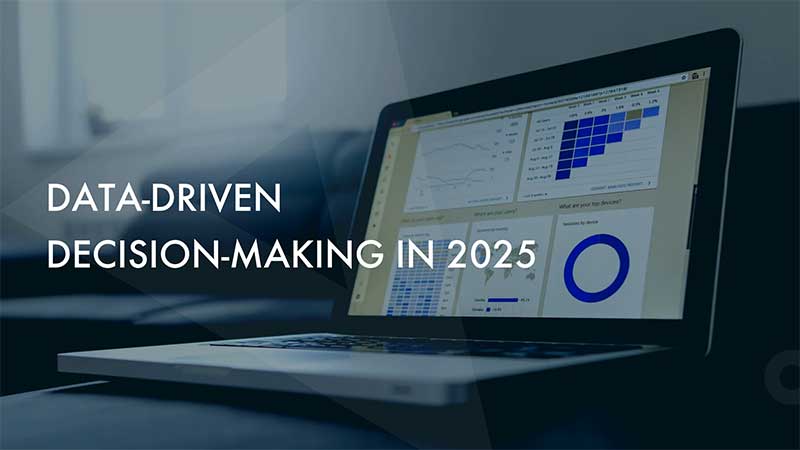Data-Driven Decision-Making in 2025: Leveraging Analytics for Effective Strategic Planning

September 24, 2024
SEB Marketing Team
For many companies, planning for 2025 has already begun and data-driven decision-making is set to play a central role in the future success of competitive organizations. With advancements in analytics, businesses can now use data to optimize nearly every aspect of their operations. For business leaders, understanding how to harness these capabilities will be crucial for staying competitive and driving growth.
Aligning Decisions with Long-Term Goals
Any effective strategy planning requires focusing on long-term goals. Data-driven insights ensure that decisions are backed by objective information, allowing leaders to make informed choices that align with their company’s long-term vision. By focusing on measurable data, organizations can prioritize initiatives that support growth, innovation, and profitability.
Embedding Data in Every Decision, From Descriptive to Predictive
In the past, data was mostly used to get a clear picture of what happened in the past, but data has evolved to allow for predictive analytics. This allows businesses to anticipate future trends, customer behavior, and market shifts, embedding data into every decision. With these insights, leaders can make more informed decisions, driving continuous performance improvement across the board, whether it’s streamlining operations, reducing costs, or enhancing overall efficiency. This foresight enables companies to stay ahead of competitors, seize new opportunities, and navigate emerging challenges.
Advanced Analytics and AI/ML for Real-Time Data Processing
Advanced technologies like artificial intelligence (AI) and machine learning (ML) play a key role in offering actionable insights that might have taken manual labor far too long to uncover. Thanks to advancements in cloud computing architectures, businesses can access powerful insights as events unfold. In 2025, this ability to analyze analytics, identify inefficiencies, predict future demands, and uncover new business opportunities, will become the norm empowering businesses and improving operational performance.
Flexible Ways to Organize and Access Data
Data organization is also becoming more flexible. In the past, data was often siloed and organized manually, making it hard to access or locate across many environments with multiple copies in existence. Accessing correct and up-to-date data was challenging. Machine learning tools now enable companies to combine different types of databases and datasets, making it easier to analyze information across departments. Additionally, evolving security ensures that sensitive data remains protected with stringent security protocols. This flexibility allows for a more integrated view of business performance, breaking down silos that traditionally hinder collaboration and data access and protecting sensitive information.
Data Sharing Platforms: The New Norm
Although many companies are already embracing collaborative digital working styles, in 2025, data-sharing platforms, such as bobsled and Amplify, are also expected to become the norm, enabling businesses to collaborate and gain insights from external data sets. These platforms foster innovation and provide access to valuable information that might otherwise remain siloed, making it easier for companies to benchmark their performance, identify industry trends, and explore new opportunities.
In 2025, leveraging data-driven decision-making will be essential for staying competitive in an increasingly complex business environment. By using predictive analytics, improving operational efficiency, and adopting advanced tools like AI and machine learning, leaders can make smarter, faster decisions that drive success. Data will no longer be a passive asset used for insight—it will actively shape the future of businesses, helping them anticipate change, optimize operations, and build stronger relationships with their customers. For business leaders, embracing data-driven strategies today means being ready for the challenges and opportunities of tomorrow.
Post navigation
Related Posts

Why Your 2026 Health Benefits Strategy Cannot Be Reactive
If you feel like you’re playing a permanent game of "whack-a-mole" with your healthcare budget,…

How to Vet a Benefits Administrator for 2026: The Data Privacy & Security Audit
By 2026, the traditional HR checklist for selecting a benefits administrator—cost, ease of use, and…

How a 90-Day Plan Saves Your Best Talent
Most companies treat onboarding as a paperwork sprint. They focus on hardware, logins, and tax…
